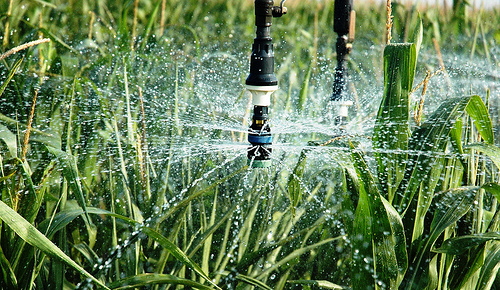
The great thirst: science, innovation and business for optimizing the use of water resources in agriculture

It’s one of the manufacturing sectors that requires more water: how we can combine productivity and a more sustainable use of natural resources? Some answers arose from the collaboration between scientific research and companies. The Mutti case study, with the participation of CMCC and WWF, presented by CMCC researcher Monia Santini at “Labirinto d’Acque”, the 4-day events dedicated to water.
The entire agricultural production cycle, from farming to harvest, and manufacturing in plants, affects water footprint, an indicator of environmental sustainability used to represent the total volume of fresh water consumed to produce the goods and services. Mutti, the Italian company specialized in tomato puree and sauce production, is well aware of this issue and started a collaboration with the WWF and CMCC to measure the water footprint of the entire production process and took concrete action to reduce it.
There are already some encouraging results: the 2010 reduction target, that is a water footprint reduction along the entire tomato production chain of 3%, has been achieved and passed (4.6% the water footprint reduction currently achieved) by improving irrigation efficiency. The irrigation water currently saved is almost a billion liters of water.
The farmers’ Organisations also helps growers to analyse and check data so that they can understand where and how to intervene in order to reduce water consumption. For instance, they suggest using special sensors to measure the level of moisture in the soil, and provide useful information for effective water consumption management.
The study underlines that water footprint is in particular affected by the agricultural practices adopted in the tomato cultivation. For this reason, Mutti has invested in new technologies, training modules, communication and dissemination activities, and technical assistance for farmers and producer organisations.
Monia Santini, CMCC researcher at IAFES Division, dealt with the update and monitoring of the water footprint of the company and quantification of the reduction potential from reduction measures formulated and implemented.
The quantification and update of the water footprint have been realized considering annual production data, meteorological conditions and operations in the factory, according to the Water Footprint Manual (and other referenced methodologies). Moreover, the CMCC realized a monitoring of the water footprint reduction objectives, and an analysis of water footprint trends under climate regimes and footprint reduction scenarios. Footprint reduction scenarios were based on hypotheses of agricultural practices (irrigation, fertilization, fertirrigation) to support valuable correction measures to achieve the reduction target, such as new technologies, actions for involvement and training of farmers and their associations.
On March 23, 2018, CMCC researcher Monia Santini and Ugo Peruch, Director of the Mutti’s Agricultural Department, will present the latest results of the project WWF-Mutti Water Footprint at the event “Labirinto d’acque”, a 4-day of seminars, conferences and other events on the theme of water.
For more information, visit the official website of the event.

